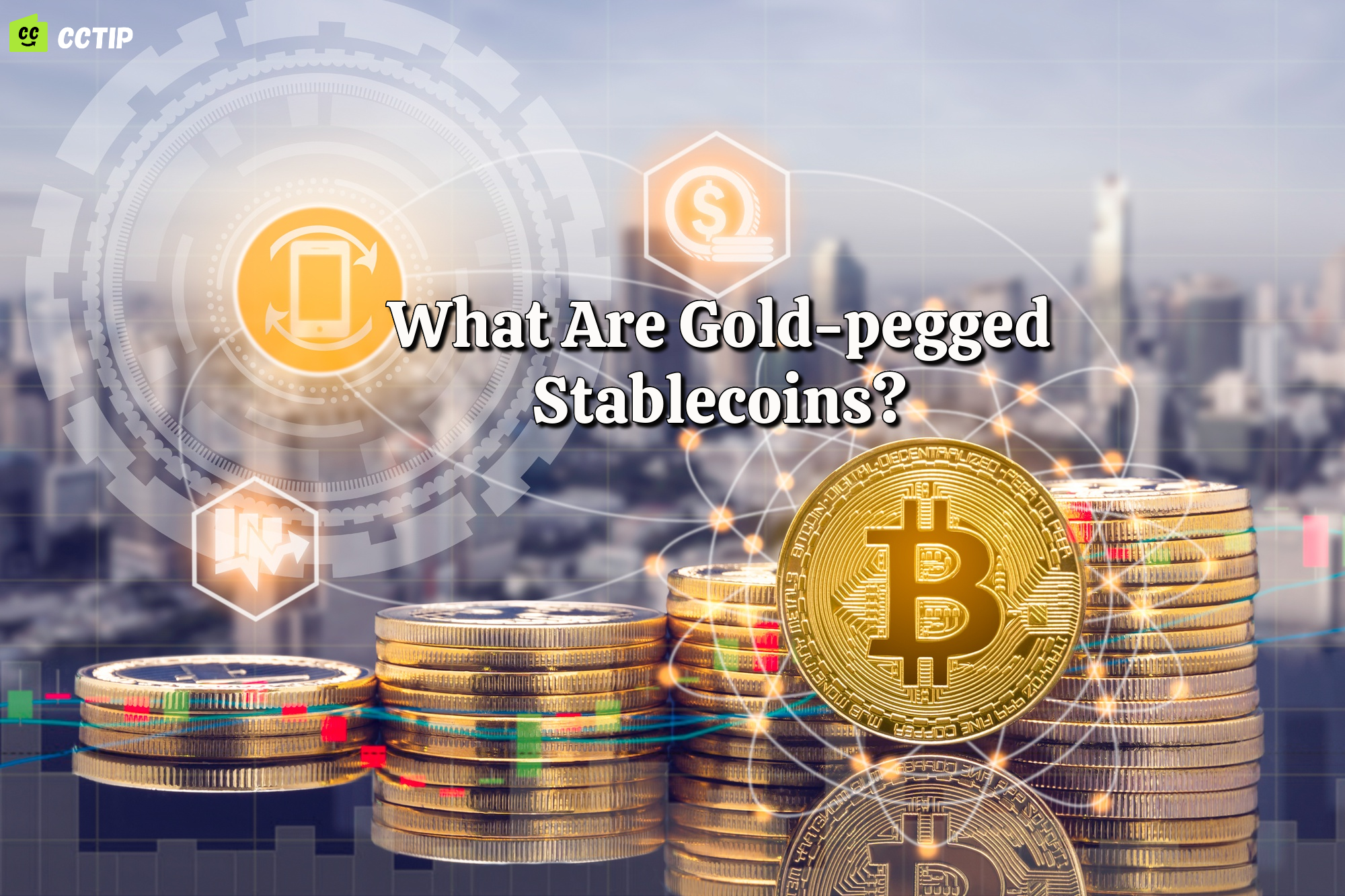What Are Gold-pegged Stablecoins?
A gold-pegged stablecoin is a digital asset whose value is backed by the equivalent price in gold. Each gold-pegged stablecoin, or fraction of the token, represents an equal real-world value in gold & unilaterally determines that each of its tokens is worth an equivalent amount..

Stablecoin emerged to avoid uncertainty in the market and prevent price fluctuation and instability of cryptocurrency.
Stablecoins are digital currencies backed by fiat money, other cryptocurrencies, or physical assets such as gold. The values of these coins do not fluctuate significantly because secure investments support them. As a result, investors and traders frequently utilize stablecoins to stay in crypto markets while shielding themselves from market price volatility because they are pegged to an expected and stable value.
Stablecoins are typically pegged to an underlying asset in a 1:1 ratio, meaning that one stable coin equals one unit of another fiat currency. They are of various types, and each uses a different method to maintain its peg to the currency or asset it follows.
However, stablecoins pegged to physical assets have been gaining more traction in the crypto space due to their uniqueness, as they serve as a store of value and are not subject to computer algorithms. Thus, a stablecoin backed by physical assets such as gold is referred to as a Gold-pegged stablecoin.
What is a Gold-pegged Stablecoin?
A gold-pegged stablecoin is a digital asset whose value is backed by the equivalent price in gold. Each gold-pegged stablecoin, or fraction of the token, represents an equal real-world value in gold and unilaterally determines that each of its tokens is worth an equivalent amount of a specific number of grams or troy ounces of gold. As a result, the equivalent worth of a gold gram should be present in the trusted custodian's reserves as physical collateralized assets.
A gold-pegged stablecoin is a commodity-based stablecoin type that gives investors a physical and tangible value linked to the gold market spot price. As such, it is perceived as an asset for investment, as the physical value of gold can change, which reflects the value of the stablecoin. As a result, when the prices of gold rise or fall, the gold-pegged stablecoin follows the same path.
How Does It Work?
A centralized issuer typically operates a gold-pegged stablecoin. The centralized issuer is a reputable custodian, usually an independent third party, who securely stores the gram of gold and can trade it with other holders. However, physical gold in the form of coins or bullions, gold plaques, gold certificates, gold medals, or any other securities with a gold theme can be kept with the custodian. As a result of being bound to a counterpart, gold-pegged stablecoins are off-chain cryptocurrencies.
The gold-pegged stablecoin exists as a token on the open blockchain in exact proportion to the underlying gram or ounce of gold. Most of the ecosystem's gold-pegged stablecoins were created on the Ethereum blockchain using smart contracts that adhered to the ERC-20 token standard.
However, a holder of a gold-pegged cryptocurrency can choose to redeem their token to its physical form and for a specific amount of the underlying gold by presenting the gold tokens to the issuer, who will then calculate the gram of gold to be collected based on the quantity of the token. When a gold-pegged cryptocurrency is redeemed for its underlying gold, the gold-pegged cryptocurrency is burned and taken out of circulation.
Benefits of Gold-pegged Stablecoin

- Gold-pegged stablecoin provides a convenient way to invest in gold for many investors, who generally do not have access to gold assets or other traditional financial instruments.
- Gold-pegged stablecoin opens new possibilities for reducing financial risk and protecting against inflation.
- Gold-pegged stablecoin promotes the widespread adoption of gold as a medium of exchange and regular payment.
- Unlike physical gold, which is tangible and can't be traded, gold-pegged can be easily traded over blockchain networks worldwide.
The stablecoin's physical gold reserve will also increase the cryptocurrency's security. Cryptocurrencies backed by resources have a track record of being more secure than algorithm-based stablecoins.
Risk Associated with Gold-pegged Stablecoin
- Gold-pegged stablecoin redemption process to physical gold is not always smooth, and it could take longer days.
- It could be challenging to determine whether the underlying gold is accurate and whether the storage is safe.
- Gold-pegged stablecoin dependence on holding companies for the safekeeping of collateral carries an underlying risk that undermines the decentralized nature of cryptocurrencies.
The Takeaway
The gold-pegged stablecoin is another variant of stablecoin that aims to combat cryptocurrency's market fluctuation and volatility. As a result, they are a hybrid of gold, which serves as a store of value, and cryptocurrency, which allows for decentralization and easy access to physical assets.
Easily send, receive, hold or swap Stablecoins on Cwallet!
You can quickly deposit, withdraw, or swap stablecoins using the Cwallet at the lowest possible fees.
Learn more about sending/ receiving and swapping tokens!
Cwallet offers the lowest cross-chain transaction fees!
You can swap PAXG, XAUT, AGLD, and other stablecoins listed above between 800+ cryptocurrencies on Cwallet. Whether performing a cross-chain swap or an "on-chain swap," Cwallet offers the lowest possible transaction fees. You can swap various currencies within your wallet for absolutely free!
What's more?
Cwallet does not charge any deposits, withdrawals, and token swap fees. Therefore, using Cwallet is absolutely FREE!
So, what are you waiting for?
Download the Cwallet NOW.